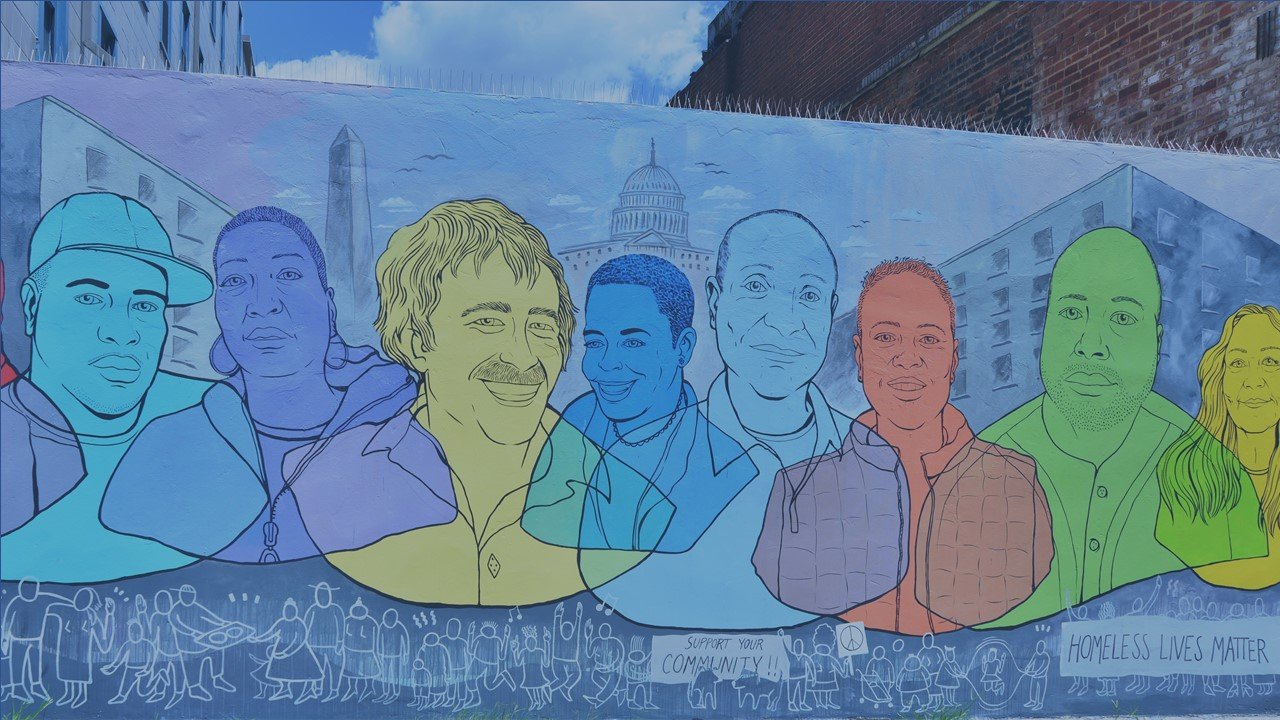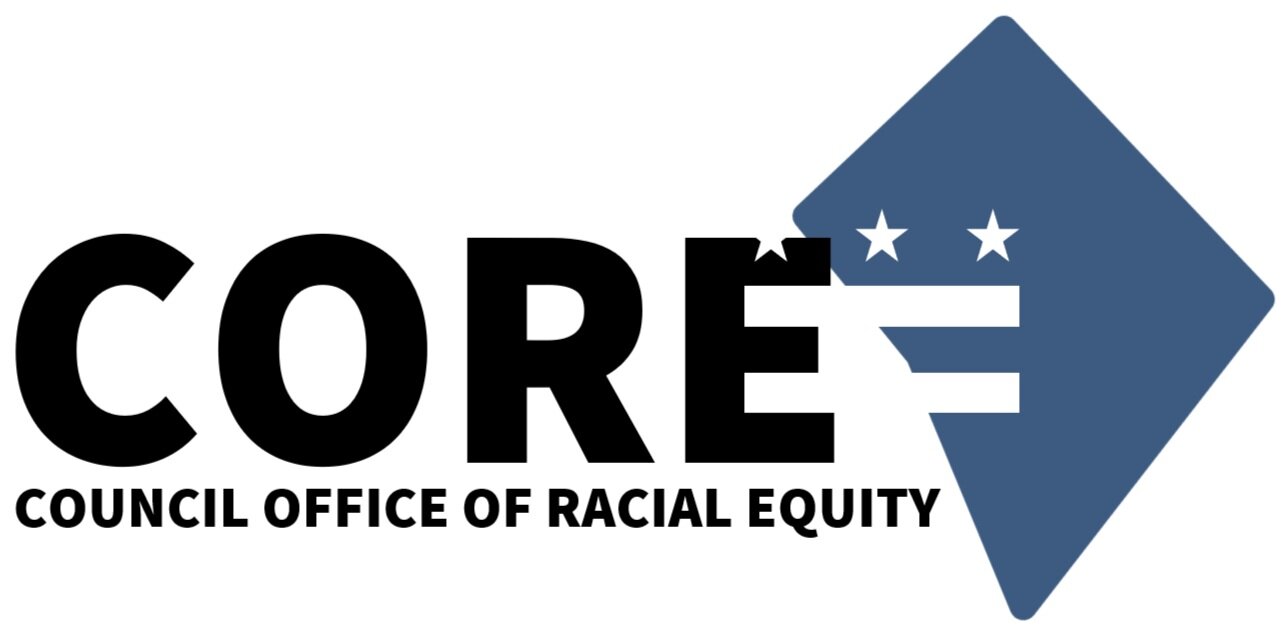
Our Blog: Getting to the CORE
Symptoms and Structures
Reimagining Racial Equity Impact Assessments
January 3, 2022
Have our Racial Equity Impact Assessment conclusions been keeping you up at night? Have you ever wondered how we arrived at a specific score, or wish we said more... (or less)? Do you think our assessments have amplified the experiences of the District’s Black, Indigenous, and other communities of color? Well we—the Council Office of Racial Equity (CORE)—spent the entire summer (annnd some of the fall 🙁) rethinking how to make our Racial Equity Impact Assessment work better for you, the Council, and the District.
In the spirit of transparency and solidarity, we invite you to hear about our process. Before we dive in, a few quick refreshers:
First, CORE launched in January 2021. Our mission is to eliminate racial inequities and achieve racial equity in the District of Columbia. Our primary task is to figure out whether Council’s policy and legislative proposals will make progress toward racial equity—or increase racial inequity. We conduct Racial Equity Impact Assessments (REIAs) to accomplish this task.
Second, a REIA is a careful and organized examination of how a proposed bill or resolution will affect different racial and ethnic groups. Before Council’s summer recess, our team completed ten REIAs using the five point scale below. REIA conclusions always started with the bill number, continued with a statement about the bill’s racial equity impact, and ended with “in the District of Columbia.”
For example, a conclusion read like, “Bill XX-XXX has the potential to advance racial equity in the District of Columbia.”
will exacerbate racial inequity
has the
potential to exacerbate
racial inequity
maintains status quo of racial inequity
has the
potential to advance racial equity
will
advance
racial equity
Over the past eleven months, we learned from the community, Council staff, and other government officials from across the country also bringing a racial equity lens to policy. We’ve reflected on how we have been successful and what we have learned from our experiences.
Given the importance of racial equity, we could not sit on these learnings. We knew we had to use these learnings to improve our work. With this in mind, we decided to update our original scale.
Find out more about the
Groundwater Approach from
the Racial Equity Institute
and our latest newsletter!
Our updated scale is rooted in the Groundwater Approach, a metaphor introduced to our team during a workshop led by the Racial Equity Institute. This metaphor emphasizes that society’s systems were created to disadvantage or completely exclude Black, Indigenous, and other people of color. This means that racial inequity is caused by systems, regardless of culture or people’s individual behavior—and that the experiences of Black, Indigenous, and other people of color are vastly different from the experiences of white people interacting with the same systems.
The Groundwater Approach aligns with our work. Writing a REIA requires exploring Council’s proposed solution in the context of the systems reinforcing racial inequity for Black, Indigenous, and other residents of color in the District. At the end of our research, we identify how a bill impacts the symptoms and structures of racial inequity.
To acknowledge these two types of impact, we are adding two additional “angles” to the racial equity lens moving forward. Our new approach will highlight whether a bill addresses the symptoms of racial inequity, the deeper structures that reinforce racial inequity, or both.
Angle One: Symptoms and Government Operations
The first angle evaluates symptoms of racial inequity and everyday government operations.
What is a symptom of racial inequity?
A “symptom” of racial inequity is a sign of structural racism. For example, the difference in homeownership between Black District residents (35%) and white District residents (49%) is a symptom of racial inequity. Homeownership inequity is a sign of the structures preserving and reinforcing racial inequity: residential segregation, wealth denial, occupational segregation, and income discrimination (among others).
What does the term “government operations” mean?
The term “government operations” includes:
bills adjusting how the government delivers daily services (like snow removal),
model legislation (a piece of legislation that jurisdictions can borrow from, modify, or adopt fully to align with national best practices), and
Proposed Resolutions (special or temporary measures of the Council) eligible for a REIA.
This angle examines how a measure impacts aspects of the lives of the District’s Black residents, Indigenous residents, and other residents of color—rather than the bill's impact on racial (in)equity more broadly.
For example, looking from this angle, we may conclude:
This bill will harm the health of the District’s Black residents, Indigenous residents, and other residents of color, who are more likely to experience food insecurity. This increased likelihood is due to several factors, including a relentless denial of wealth building opportunities, occupational segregation, and income discrimination.
Angle Two: Structures
The second angle examines how a bill addresses the deeper structures of racial inequity, root causes, and institutional practices that reinforce structural racism.
This angle applies to bills that propose comprehensive reform, dramatic shifts in resource distribution, or changes across multiple sectors. This angle examines how a bill impacts racial equity and inequity in the District of Columbia (rather than the immediate impact on the District’s Black residents, Indigenous residents, and other residents of color).
For example, a conclusion from a structural angle might read:
This bill will likely make progress toward racial equity in the District of Columbia. This bill targets a structure of racial inequity by allocating funds to neighborhoods based on historic disinvestment, which was concentrated in the District’s majority Black neighborhoods.
A visual summary of the two new angles follows:
The CORE team will use our experience to determine the appropriate angle to use for each bill. Bills can sometimes have multiple parts, and some parts might focus on symptoms and some might focus on structures. In these cases, we will examine each part using the relevant angle.
What else should I know about the two new angles?
The District must
address both symptoms
and structures.
Some bills won’t address structural inequities and that’s okay. To achieve a racially equitable District,
however, legislation must
change structures.
Addressing structures is not better than addressing symptoms.
Symptom relief now is just
as important as structural
change in the future.
Impact is
greater
than intent.
A bill’s intent does not influence the REIA conclusion. Intent is hard (if not impossible) to figure out and impact is what matters.
As a new office, we are always looking to improve and refine the tools, processes, and practices. And more importantly, our office is joining committed residents who have been doing this work long before us. Please use the form below to tell us what you think about the new scales. What makes sense to you? What is confusing? What did we miss?
In the meantime, we encourage you to read more about how our new scales fit into our REIA process and review our completed REIAs.
Header mural painted by Rose Jaffee as part of DPW's MuralsDC program.






